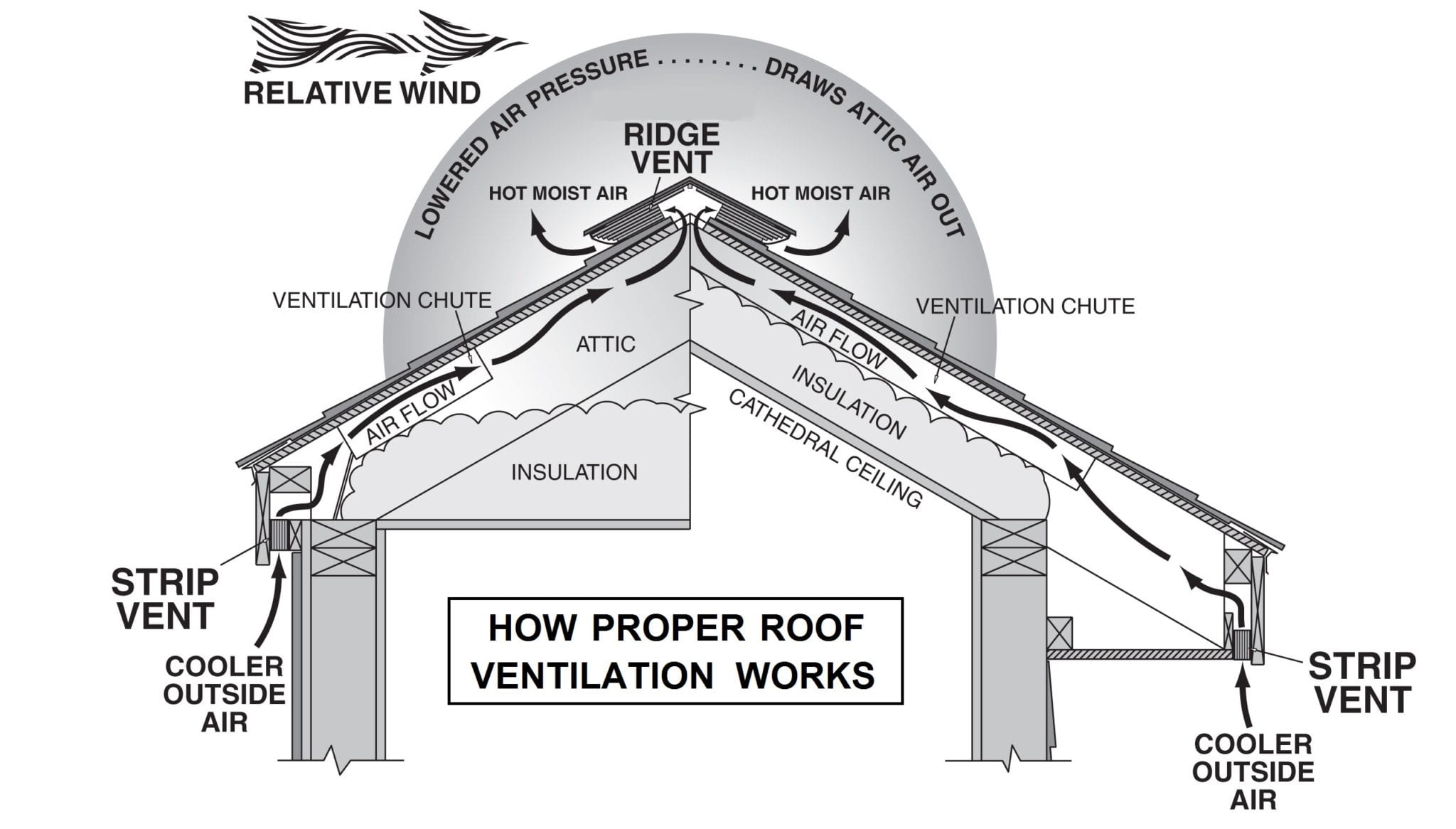Ventilation is the flow of air through a system of intake and exhaust. The need for roof ventilation wasn’t documented until the early to mid-20th century. That’s when organizations like the American Society of Heating, Refrigerating & Air-Conditioning Engineers and Forest Products Laboratory recognized that building condensation problems could be caused by poor roof ventilation.
There are 3 benefits of Roof Ventilation.
1) Extends the life of your roof.
Ice damming happens when heat from inside your attic combines with heat from the sun to melt snow and ice on your warm roof. When the water runs to the edge of the roof, it begins to refreeze. As the ice and water build up at the edges of your roof, it can back up behind/underneath the roofing materials, causing damage to your whole roof system, your attic and even inside the walls of your home. Proper ventilation helps this warm air escape before it has a chance to melt the snow and ice on your roof. A well-vented roof is easy to see in the winter months. It still has snow on the roof, but not an icicle in sight.
Ventilation benefits a roof when it’s hot outside as well. When the temperature outside rises, the temperature on your roof can be nearly double. A hot roof over a poorly vented attic translates into a very hot attic. Unventilated or poorly ventilated attics don’t have an escape route for the heat that builds up. An evenly vented roof will allow the hot air to escape keeping your roof and attic cooler.
2) Reduces energy costs.
When the temperature increases outside, we all want to stay cool inside. A properly vented roof allows heat to escape, reducing the workload on your air conditioner. An air conditioner that’s running less means a lower electric bill month.
3) Reduces indoor temperature extremes.
These indoor temperature extremes are the result of poorly vented roofs. Once your roof is adequately vented to allow the hot air to escape and the cool air to enter the attic space, your home will be more comfortable year-round.



